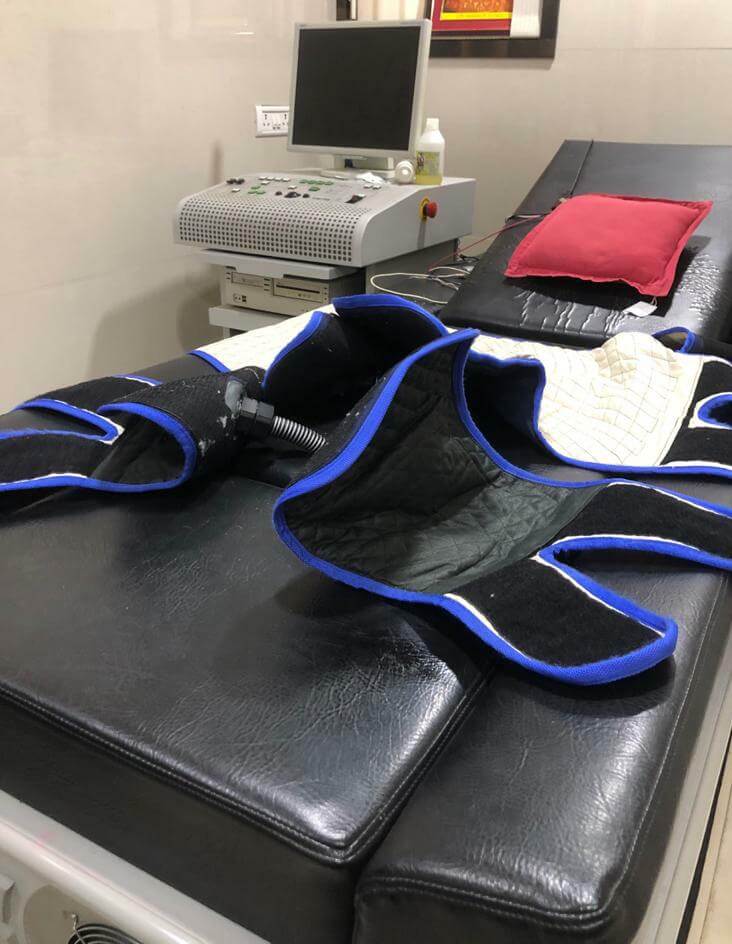
Who is a candidate for EECP?
- Have chronic stable angina.
- Are not receiving adequate relief from angina by taking nitrates.
- Do not qualify as candidate for invasive procedure / bypass or stenting
- Diabetic patients as diabetes itself is a microvessel disease.
- For anyone who wants t take it as a preventive therapy / antiaging.
What does EECP look and feel like?
ECP is a beautifully simple treatment.
You lie down on a comfortable ,specially designed bed and a therapist wraps a set of oversized blood pressure cuffs tightly around your calves,thighs and buttocks with a 50 milli seconds delay between each and then release simultaneously
The trigger for the cuffs to inflate and deflate what makes the machine operate is your own heart beat.
We place three electrodes on your chest,the computer reads your EKG(electrocardiogram) continuously throughtout the treatment.When your heart beats the cuffs relax.And when your heart rests,between beats,the cuffs squeeze around your legs promoting blood flow back upto your heart and throughtout your body.
Feeling the cuffs inflate( squeeze )and deflate( release )around your legs is painless. It feels like deep rhythmic message to your legs. You feel nothing above the waist and nothing in the heart or chest.
EECP is so comfortable that most patients listen to music,read or even fall asleep during their treatment.
What does EECP do to your blood flow?
It is precisely during diastole while the heart is resting that EECP blood pressure cuffs squeeze your legs with a circumferential pressure of 260 mmHg, blood flows retrograde thought the arteries that is back upto the heart and into coronary circulation and increase myocardial perfusion
The treatment has been shown to increase or augment diastolic blood pressure, measure of blood flow to the heart while the heart is resting between the beats bt 93% and increase overall blood flow to heart by 28%. The blood flow back to the heart is measured by placing a clip on the finger
Who should not seek EECP?
- Congenital heart disease.
- Severe valve disease. ( Especially AS )
- Enlarged heart
- Pacemaker
- Atrial fibrillation ( afib )
- Pulmonary hypertension
- PVD
- Severy elevated blood pressure
- Heart rate greater than 120 beats per minute